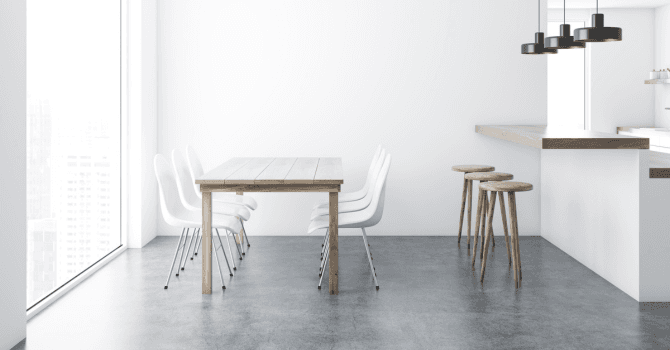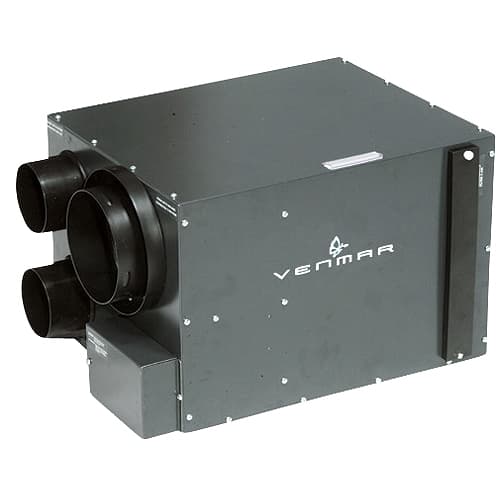
Both durable and resistant, bamboo flooring is an interesting alternative to hardwood. Even though it’s attracting more and more attention and gaining in popularity, we have to outline how important it is to take some precautions concerning its installation to be able to benefit from its qualities.
Obviously, to take full advantage of a new bamboo flooring, you also need to be able to maintain it properly. In this article, we will share tips about the installation and maintenance of a bamboo floor.
Installing a bamboo floor

The search for a high-quality product
First of all, know that buying a bamboo floor will require you to exercise caution. Indeed, you need to know that the quality of this material can vary widely, notably because of the way it is harvested, which can be done too early in some cases. Due to the fact that it doesn’t always have enough time to reach its full maturity, it could be less resistant and of lower quality. Knowing this fact, it is especially important to be wary of bamboo flooring that is sold at low prices.
Moreover, to ensure that you are buying a high-quality product, be sure to purchase a material that has an FSC certification. This seal indicates that the material adheres to a set of fifty factors that exist to ensure the quality of the material, as well as a harvesting practice that is respectful of the plant’s maturation period, as well as the absence of pesticide use. Lastly, because of its composition, a product without formaldehyde should be preferred.
Is this the right choice for you?
Although you could initially be seduced by the look of this material, remind yourself that it might not be the one you need for your project. Indeed, it’s worth noting that a bamboo flooring does not resist well to moisture and when it reaches a high level of humidity it may tend to get deformed or warped. In addition, too much moisture may cause your flooring material or the glue used to install it to rot.
Before moving forward with the purchase of a new bamboo floor, make sure to test the level of moisture of your subfloor. If the latter is wood, the level of humidity should not exceed 12% whereas, for a concrete subfloor, the humidity should not exceed 75%. If you notice areas marked by the presence of mould in the room or if previous tests are inconclusive, it would be better to change your plans.
The preliminary stages of your project

1) Removing the existing floor
Let’s begin the explanation of the installation process for this type of floor by mentioning that you should remove the existing floor, whether it’s a solid material or a carpet. Also, if you have mouldings, remove them with care to avoid damaging them and to be able to put them back in place at the very end. Obviously, furniture must have been removed beforehand.
2) Make sure your floor is level
This is absolutely necessary to ensure an effective installation process of your bamboo flooring. Once your entire floor is removed, vacuum it to remove any dust. Also, take a close look at your floor to remove any stain that may be on it. To do this, use a long level (measuring tool) and check the level of your floor in more than one place. If your floor is not level and the difference is more than 5 mm for 3m, then it’s essential to remedy the situation.
But how can you do it, specifically? The process to follow will depend on the type of subfloor that you have. If the latter is made of concrete, you should use a concrete grinder to level the sections that are too high and a concrete repair mortar to lift up the sections that are too low.
Your subfloor is made of wood? Then, you will have to sand the boards that are too high and replace the boards that are too low.
3) Calculate the dimensions of your floor
To buy the right amount of materials, measure in square meters the dimensions of the floor you wish to cover. Expect to buy 5% more than you need for your project in order to have a margin of error.
4) Wait for the ideal temperature
As we already mentioned previously, bamboo is pretty sensitive to temperature changes. For this reason, it is recommended to start the installation process when the temperature has been constant for two consecutive days and is between 16 and 21 degrees. Regarding the humidity level, it should be between 40% and 60%.
Once you reach the right level of humidity and temperature, store the packages of floorboards in the room for 3 days. This way, your floor will be adapted to the temperature of the room and you will greatly limit the probability to see your floor being deformed. Be careful not to leave the boards on the floor, but to place them on a table.
Installing a wood floor if your subfloor is in concrete

If your subfloor is made of concrete, this may slightly lengthen the process leading to the installation of your bamboo flooring. Indeed, because it would be impossible to nail floorboards on concrete, you will have to install wood flooring on concrete before moving forward with the installation of your bamboo flooring.
Installing a bamboo flooring
For the installation process, make sure to leave a margin of 1.25 cm between your slats and the wall to avoid any problem if the floor ends up warping. To maintain the same spacing throughout the project, don’t hesitate to use spacing holds.
You should begin the installation by laying the first floorboards in-line. Make sure they are in a perpendicular position in relation to the direction of the joists. You will have to trim the last floorboard of your first line so that it fits the length of your floor. The remaining piece should be used to start the second row.
Once this step is completed, drill holes in the floorboards that are in the first line, but do not secure them immediately. Remember that the holes must be smaller than the diameter of the nail. This way, you can prevent your floorboards from cracking or deforming. The angle to be respected when nailing is 50 degrees from the board's edge. This will allow for the next row to hide the nails on the previous floorboard.
To nail floorboard, it’s essential to take some precautions to avoid cracking the wood. Therefore, you have to leave a 10 cm space from the wall before nailing, while also respecting a 25 cm spacing between the nails. When nailing the boards, exercise caution regarding the amount of pressure applied with your nailing gun. If it’s too high, you’ll crack your floorboards.
Lastly, make sure to use 18-gauge nails and remember to always nail on the strip of the floorboard while respecting the nailing angle that was previously mentioned.
To keep the floorboards close enough to each other, use a rubber mallet and bang on the edge of each one of them. Of course, the floorboards in your last row may not be the right width, which is why you’ll need to trim them using a circular saw.
What you need to do to have an even floor
Let’s keep in mind that the colour of your slats won't necessarily be the same from one package to another. Therefore, it’s recommended to avoid finishing one box before moving on to the other. Instead, you should open all the packages and draw into each one of them to mix the shades and avoid creating colour sections on your floor.
Do you wish to learn more about other eco-friendly renovation materials? Read our article 10 green home renovation materials.
Maintaining your bamboo flooring
How to clean your bamboo flooring
To clean your bamboo flooring, it’s best to avoid cleaning with a large amount of water. Indeed, this may damage the floor’s lustre and make it disappear. It’s best to use a microfiber broom or vacuum cleaner to remove small particles from the floor.
You can still use a mixture of water and dish soap to clean your bamboo floor if you wish, as long as the mop you are using is completely wrung out. Rinse with as little water as possible for cleaning and be sure to dry the floor afterwards.
Not only is it nice and pleasant to have a clean floor, but it also prevents small particles like grains of sand from scratching your bamboo flooring. Although the scratches may be minor, their accumulation will inevitably make them visible. This is why it is also strongly advised to place a carpet in a lobby.
What to do in case of a stain?

If you notice a stain on your bamboo floor, wipe it off quickly. While this may be a recommendation that applies to all floors, it is of particular importance for bamboo flooring. Because it is a porous material, the liquid will tend to seep quickly into it.
When it comes to oil or grease stains, a good quality black soap should allow you to remove them. All you have to do is apply it to the stains and gently rub it with a soft cloth in circular motions.
For ink stains, soak a soft cloth with acetone and rub it on the stain. Be aware, however, that the protective varnish on your floor will be altered and that you will have no choice but to refinish it. Don't forget to rinse and dry the floor after detaching it.
What about wine stains on busy evenings? In order to remove them, a cloth soaked in diluted vinegar will do just fine. As for mould stains, be aware that a little ammonia mixed with soapy water will be of great help to you. Finally, as a precaution, put small pieces of felt under the legs of your chairs and furniture to prevent them from marking the ground while on the move.
A little tip to restore the lustre of your floor
Have you noticed that your bamboo floor has lost its lustre and that it looks a little dull? To make it shine again, prepare a mixture of hot water, a tablespoon of turpentine and a tablespoon of flaxseed oil. This blend will restore your floor to its former lustre and charm in no time!
Get 3 renovation quotes for your flooring renovation project
RenoQuotes.com can help you get quotes for your flooring renovation project. If you submit your project to us, we’ll put you in contact with top-rated contractors. Fill in the form on the homepage (it only takes a few minutes), and you will get estimates from trusted professionals.
Dial 1-844 828-1588 to speak with one of our customer service representatives.
Looking for something else?
Related articles
The latest industry news, interviews, technologies, and resources.

Editorial Team
•07 Nov 2023
Are you planning on giving your concrete floor a finishing touch to add a little extra flair to your home? There are various finishing techniques that are well worth checking out.

Léa Plourde-Archer
•26 Aug 2024
Are your hardwood floors damaged? Thinking of renovating them? RenoQuotes.com has got you covered, detailing solutions for repairing hardwood floors, including various ways to refinish your wood floors for effectively shielding newly buffed surfaces.

Editorial Team
•07 Nov 2023
As a contractor working in the industry, you’ll understand the time, energy and dedication every aspect of the job requires. Regardless of your field, the health and safety of workers are of the utmost importance.

Editorial Team
•18 Aug 2025
Québec homes are built and insulated to retain heat during the winter and cool air during the summer. The downside of this setup is that stale air remains longer inside the home. To breathe fresh air indoors, natural ventilation has given way to mechanical ventilation.

Amanda Harvey
•07 Nov 2023
Going green isn’t only in fashion, it is one step towards saving our environment. As sustainably conscious homeowners grow in numbers, individuals are constantly looking for ways to improve the energy efficiency of their homes.